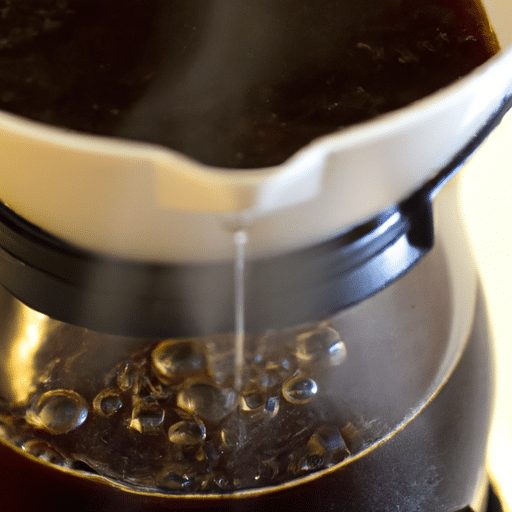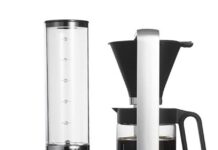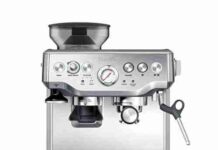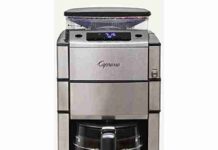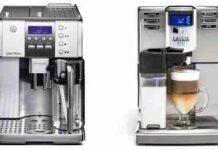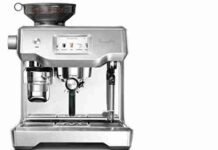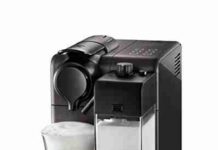Coffee lovers rejoice! We have finally unlocked the secret to achieving the perfect cup of joe with your beloved drip coffee machine. Say goodbye to weak and watery brews, and bid farewell to overpowering and bitter concoctions. In this article, we will reveal the holy grail of coffee to water ratios that will make your taste buds sing and leave you wondering how you ever settled for anything less. Get ready to elevate your morning routine and savor every sip of your favorite beverage.
Understanding the Coffee to Water Ratio
Why is the coffee to water ratio important?
The coffee to water ratio is a crucial aspect of brewing coffee. It determines the strength, flavor, and extraction of the coffee. Getting the ratio right ensures that your coffee is not too weak or too strong. It allows you to optimize the taste and enjoyment of your coffee.
What does the coffee to water ratio mean?
The coffee to water ratio refers to the amount of coffee grounds relative to the amount of water used during brewing. It is typically expressed as a ratio, such as 1:15, indicating the number of parts water to one part coffee. This ratio determines how strong or weak your coffee will be. The ratio can vary depending on personal preference, the type of coffee, the size of the coffee machine, and the desired brewing time.
Factors to Consider
Type of Coffee
Different types of coffee beans have varying levels of flavors and strengths. Lighter roasts tend to have a more delicate flavor profile, while darker roasts are bolder and richer. The type of coffee you choose will influence the coffee to water ratio you need to achieve the desired taste.
Preferred Strength of Coffee
The strength of coffee is a matter of personal preference. Some people prefer a stronger, more robust flavor, while others enjoy a milder taste. Determining your preferred strength will help you choose the appropriate coffee to water ratio.
Size of Coffee Machine
The size of your coffee machine plays a role in determining the coffee to water ratio. Smaller machines may require a smaller ratio to prevent over-extraction, while larger machines can handle a higher ratio. Consider the capacity of your coffee machine when determining the ratio.
Brewing Time
The brewing time affects the extraction of flavor from the coffee grounds. A longer brewing time may require a higher coffee to water ratio to maintain the desired strength. Conversely, a shorter brewing time may call for a lower ratio.
Recommended Coffee to Water Ratios
Standard Coffee to Water Ratio
The standard coffee to water ratio is often considered to be 1:15, which means using 1 part coffee to 15 parts water. This ratio produces a balanced and flavorful cup of coffee. It is a good starting point for most coffee brewing methods.
Stronger Coffee to Water Ratio
If you prefer a stronger cup of coffee, you can increase the coffee to water ratio. A ratio of 1:12 or even 1:10 will yield a bolder taste. Experimenting with slightly higher ratios can enhance the intensity of your coffee.
Weaker Coffee to Water Ratio
For those who enjoy a milder cup of coffee, a weaker coffee to water ratio can be used. A ratio of 1:18 or even 1:20 will result in a less concentrated brew. This can be beneficial when using more delicate coffee beans or if you prefer a subtle flavor profile.
Golden Ratio
The Golden Ratio, often referred to as 1:17, is another popular coffee to water ratio. This ratio strikes a balance between strength and flavor, offering a smooth and enjoyable cup of coffee.
Adjusting the Ratio for Personal Taste
Experimenting with Different Ratios
Every coffee lover has unique taste preferences. Experimenting with different coffee to water ratios can help you find the perfect balance that suits your palate. Start with the standard ratio and gradually adjust it until you achieve the desired taste.
Affect of Ratios on Coffee Flavor
Changing the coffee to water ratio has a direct impact on the flavor of your coffee. A higher ratio will result in a stronger and more robust taste, while a lower ratio will produce a milder and lighter flavor. Understanding how these ratios affect the coffee flavor will allow you to tailor your brew to your liking.
Finding the Perfect Balance
Finding the perfect coffee to water ratio is a personal journey. It requires experimentation, tasting, and adjusting until you discover the ideal ratio that satisfies your taste buds. Take notes during your brewing process to keep track of the ratios you’ve tried and the corresponding flavors.
Calculating the Coffee to Water Ratio
Using Measuring Cups and Scales
To calculate the coffee to water ratio, you can use measuring cups and scales. Measure the coffee and water separately and adjust the quantities based on your desired ratio. This method provides accurate measurements and helps maintain consistency in your brewing.
Using Volume Measurements
If you don’t have a scale, you can still achieve good results by using volume measurements. Use a standard tablespoon to measure the coffee and adjust the amount of water accordingly. While this method may not be as precise as using a scale, it can still give you a decent approximation.
Using Coffee Brewing Apps
Coffee brewing apps are a convenient tool to calculate the coffee to water ratio. These apps provide step-by-step instructions, tips, and interactive timers to guide you through the brewing process. Many apps also offer preset ratios based on different brewing methods, making it easier for you to brew a great cup of coffee.
Other Considerations for Brewing the Perfect Cup
Grind Size
The grind size of your coffee grounds plays a significant role in the extraction process. Finer grinds will require a shorter brewing time and may need a higher coffee to water ratio, while coarser grinds will require a longer brewing time and a lower ratio. Adjusting the grind size in combination with the coffee to water ratio can result in a well-balanced extraction.
Water Quality
The quality of the water you use affects the taste of your coffee. Using filtered or bottled water can enhance the flavor by eliminating any impurities that might alter the taste. Avoid using overly chlorinated or distilled water, as they can negatively impact the brewing process.
Temperature of Water
The temperature of the water used for brewing also influences the extraction. Optimal water temperature is typically between 195°F to 205°F (90°C to 96°C) for most coffee brewing methods. Ensuring the water is within this range will allow for proper extraction and enhance the flavors in your coffee.
Brewing Techniques
Different brewing techniques require different coffee to water ratios. For example, pour-over methods often use a finer grind and require a slower pour, while French press methods use a coarser grind and require a longer steeping time. Understanding the specific requirements of your chosen brewing technique will help you determine the appropriate coffee to water ratio.
Troubleshooting Common Issues
Weak or Watery Coffee
If your coffee tastes weak or watery, it may be due to a high coffee to water ratio. Try using a stronger ratio, such as 1:12 or 1:10, to increase the concentration and improve the taste. Additionally, adjusting the brewing time or grind size can also impact the strength of your brew.
Bitter or Over-Extracted Coffee
A bitter or over-extracted coffee can result from using too high a coffee to water ratio or brewing for too long. To avoid this, decrease the ratio or adjust the brewing time to achieve a better balance. Experimenting with different ratios will help you find the optimal combination for a smooth and flavorful cup.
Inconsistent Flavor
Inconsistent flavor can occur when the coffee to water ratio is not consistent. Ensure that you measure the coffee and water accurately each time to maintain consistent results. Take note of any changes you make to the ratio or brewing process to identify patterns and understand which variables affect the flavor.
Alternative Brewing Methods
French Press
The French press method is known for its full-bodied and rich coffee. For this brewing method, a ratio of 1:15 to 1:17 is commonly used. However, you can adjust the ratio based on your preferred strength and taste.
Pour Over
Pour over brewing is often associated with a cleaner and more delicate flavor profile. A ratio of 1:15 to 1:17 is a good starting point for pour over methods. As always, feel free to experiment to achieve the desired strength and taste.
AeroPress
The AeroPress is a versatile brewing method that allows for experimentation with various ratios and brewing times. Start with a ratio of 1:15 and adjust accordingly. Depending on your preference, you can use a coarser or finer grind to modify the overall taste.
Cold Brew
Cold brew requires a higher coffee to water ratio due to the longer brewing time. A common ratio for cold brew is 1:4 or 1:5, which results in a more concentrated coffee. Dilute the brewed concentrate with water or milk to achieve the desired strength.
Conclusion
Understanding the coffee to water ratio is essential for brewing a delicious cup of coffee. Factors such as the type of coffee, preferred strength, size of the coffee machine, and brewing time all play a role in determining the ideal ratio. Through experimentation and adjustments, you can find the perfect balance that suits your taste. Remember to consider other factors like grind size, water quality, temperature, and brewing techniques to further enhance your brewing process. With the right ratio and a little practice, you’ll soon be able to enjoy a consistently flavorful cup of coffee every day.


